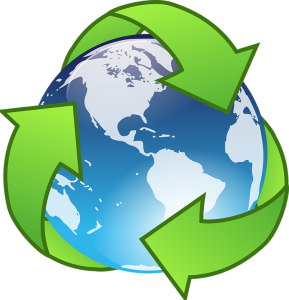 By Roy Bentley and Ken Crawford
By Roy Bentley and Ken Crawford
There are so many things happening in the world of energy these days. One only needs to watch the news or Google the word “energy” to find myriad examples and discussions of pipelines, carbon footprints, windmills, climate change and more.
And one can’t miss the emphasis on new sources of energy such as solar and wind power. These technologies have caught the imagination of our society; there is a very legitimate excitement that surrounds these energy sources.
However, with all the enthusiasm around these relatively new sources of energy, there are major questions that need to be answered… and they revolve around a major source of renewable energy that has been with us for over 100 years. Hydropower!
Here are some things to consider:
1. Is hydropower a renewable resource?
The United States House of Representatives’ Committee on Natural Resources states:
“Hydropower, generated mainly from hydroelectric dams, is a clean, renewable, non-emitting source of energy that provides low-cost electricity and helps reduce carbon emissions. U.S. hydroelectric generation is the second largest in the world, providing 7% of domestic electricity production and much larger percentages in the Western states. It is more efficient than any other form of electricity generation and offsets more carbon emissions than all other renewable energy sources combined.”
Certain agencies—such as the Environmental Protection Agency (EPA) and the Office of Energy Efficiency and Renewable Energy—are trying to take hydropower to the next level. One such notable effort has been the Federal Memorandum of Understanding for Hydropower, an interagency document in which the Department of Energy (DOE), the U.S. Army Corps of Engineers, and the Department of the Interior are continuing to advance their mutual goals for the development of clean, reliable, cost-effective, and sustainable hydropower generation in the United States.
For more information, please review this “Hydropower Research & Development” article from the Office of Energy Efficiency & Renewable Energy (www.energy.gov).
2. So why doesn’t hydropower get included in the conversation when we talk about other renewable energy resources such as solar power and wind power?
Hydropower does have its critics. And it’s not considered renewable by everyone. It comes with some “pretty significant environmental baggage,” according to John Seebach, senior director of Federal river management with the conservation group, American Rivers. He adds, “The reluctance to call hydropower a renewable energy is based on the impact [it has] on dams on fisheries and water flows.”
Several large dams block migrating fish from reaching their spawning grounds. Dam reservoirs impact flows, temperatures and silt loads of rivers and streams. Over the years, these factors have drastically reduced fish populations. At one time, the Klamath River in Oregon and California had salmon runs in the millions. The construction of four dams along the river reduced the fish runs to a fraction of that.

3. So what is happening in terms of hydropower and the environment around the dams that have been built?
Great strides have been made to help stabilize the water flow around the dams… in fact, in some instances, the stable water flow has helped to promote stronger salmon runs. New technology has helped to make hydropower even more efficient. The multi-use of the water for irrigation as well as hydropower has been greatly enhanced, and the areas around dams and reservoirs have been converted to recreational areas enjoyed by many.
Today, the reluctance to count hydropower as a renewable resource is being reconsidered in states that are trying to meet legislative state and national goals.
For more on this topic, please consult Is Hydropower a Renewable Energy or Not?

4. And is it worth it?
Proponents argue that hydropower has a lot of virtues. Not only is it clean and renewable, it is essential to new “intermittent” renewables such as wind and solar power. Hydro output can be quickly and easily turned up or down to keep the electrical grid in balance as daily doses of sunshine and wind wax and wane. Furthermore, water from rivers is a purely domestic resource, which means almost no conflicts with foreign suppliers and no interruptions as a result of labor strikes or transportation issues abroad. According to the Pacific Northwest Waterways Association, hydropower turbines are capable of converting 90 percent of available energy into electricity. That’s more efficient than any other form of generation, including even the best fossil fuel power plant, which is only about 50 percent efficient.
In his Climate Action Plan, President Obama agrees with the proponents of hydroelectric power generation that hydropower is essential to meeting renewable energy targets, which are set to double by 2020. To that end, the President wants to encourage the development of hydroelectric power at existing dams.
Across the country, there are more than 80,000 dams, and only about 3 percent of them are used to generate electricity. The administration sees this as an opportunity to expand renewable energy by adding generators or retrofitting existing non-powered dams.
All sides generally agree on one point: there is no need to build new dams to harvest power. As environmentalists see it, it makes more sense to incentivize dam operators to maximize efficiency. “In our view, that is the best bang for the buck,” Seebach said in an interview. “The dams are already there.”
5. What other things should we know about hydropower as a renewable energy source?
Again, one only needs to refer to the House of Representatives Committee report to get the information that shows the strength of hydropower:
- Hydropower accounts for approximately 75% of the nation’s total renewable electricity generation, making it the leading renewable energy source of power.
- The annual hydropower output is equivalent to the energy produced from burning 200 million barrels of heating oil.
- The National Hydropower Association estimates that more than 160 million tons of carbon dioxide emissions were avoided in the United States in 2004 because of hydropower generation.
- The hydroelectric dams on the Snake and Columbia River systems provide the Pacific Northwest with some of the cleanest and cheapest electricity in the country. The removal of the Snake River dams would add 5.4 million tons of carbon dioxide to the atmosphere each year. It would take three nuclear, six coal-fired, or 14 gas-fired power plants to replace their energy output.
- Hydropower turbines are capable of converting more than 90% of available energy into electricity, making it the most efficient form of electricity generation. By comparison, fossil fuel plants are only approximately 50% efficient.
- In addition to providing low-cost electricity, multi-purpose dams provide water for irrigation, wildlife, recreation, and barge transportation and flood control benefits.

6. So what can we do to get hydropower included in the discussion of renewable energy resources?
- Let’s make sure that hydropower is being included in the curriculum of our schools when renewable energy is being discussed.
- Let’s make sure that our educators and local officials are informed about the many resources that are available to teach about hydropower.
- Let’s celebrate the programs that are being put into place that surround hydropower plants and energy renewal.
 Read more on our Blog – Energy Sources in a Classroom
Read more on our Blog – Energy Sources in a Classroom
 Read more on our Blog – Should We Build a Dam?
Read more on our Blog – Should We Build a Dam?
 Read more on our Blog – What I have discovered – Teaching about Energy
Read more on our Blog – What I have discovered – Teaching about Energy
 Read more on our Blog – The Old Dog and the New Tricks
Read more on our Blog – The Old Dog and the New Tricks
Roy Bentley is the CEO of RB-MFG US …makers of the PowerWheel. Ken Crawford is the Director of Marketing and Learning Resources for RB-MFG US…. Check out the PowerWheel website at www.rb-mfg for more great ideas and resources.